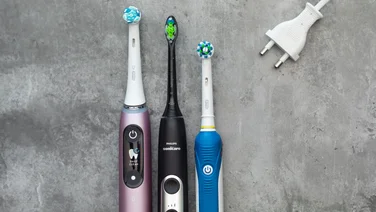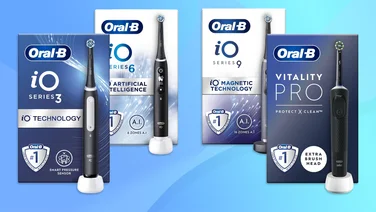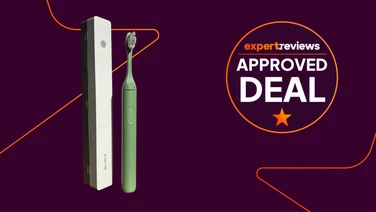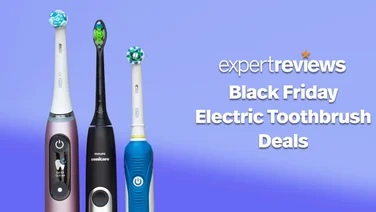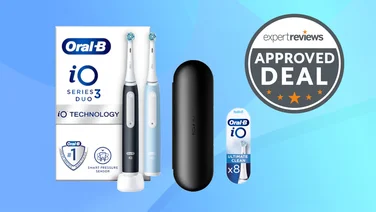To help us provide you with free impartial advice, we may earn a commission if you buy through links on our site. Learn more

Though electric toothbrushes are the best solution for effective brushing, you still need to keep them clean and well-maintained to ensure good oral health. From poor cleaning to excessive noise and a build-up of plaque, not changing your toothbrush head frequently enough can create a range of unpleasant problems.
If your electric toothbrush’s bristles are suspiciously splayed and looking a bit past their best, then it’s time to get a new brush head.
But even if your brush head is looking fine, it could still be time to swap it out. Older ones can be a hotbed for bacteria and it’s important to keep on top of your brush head’s lifespan to keep things clean.
How long can you use a toothbrush head for?
Ideally, manual toothbrushes or brush heads must be changed at least every three months. While this might seem wasteful and bad for the environment, it’s also harmful to keep using them for longer. Electric brushes are slightly better for the planet (as you’re only getting rid of the head) and many of these are now recyclable – like the Suri Sustainable Sonic Toothbrush (which our reviewer described it as “very good at scrubbing plaque off”) which is designed to last a lifetime with returnable recyclable heads.
READ NEXT: Best electric toothbrushes
How do I know if my toothbrush head needs replacing?
Outside of the general three-month rule, there are other signs to look for when considering whether to replace your toothbrush head. Bristles should look stiff and straight, but if they appear frayed or depressed then this is your cue to replace the head as soon as possible. Needless to say, you shouldn’t be putting a brush with unpleasant odours or discolouration anywhere near your mouth. If you’ve been ill, then you should also replace your brush head as it will be full of bacteria (see below).
Why should I change my toothbrush head?
Toothbrushes clean bacteria from your mouth, so they can easily become a hotbed of germs if you’re not careful. A germ-ridden toothbrush can’t clean your teeth effectively, and you also run the risk of reinfection if you’re using the same toothbrush as you did when you were sick.
Bathrooms have been shown to be quite “germy” places and if possible, keep your toothbrush covered away from the toilet (vented toothbrush covers are best as they help the bristles dry out) or stored vertically in the bathroom cabinet.
How should I clean my toothbrush head?
To discourage bacteria or hard water damage, disconnect your brush head from the main body after each use and rinse thoroughly inside the brush and around the bristles. Using very hot water will help to get rid of any toothpaste residue and dirt – plus soaking the brush head in antimicrobial mouthwash every week or so (if you feel it needs extra attention) provides an added deep clean.
READ NEXT: Best Oral-B toothbrushes
Can I extend the life of my toothbrush head?
No, this isn’t possible. But in future, be sure to pay attention to how hard you’re brushing as electric toothbrushes require far less pressure than manual ones. Some electric toothbrushes, like the Oral-B iO Series 6, which our reviewer described as “fantastic” in this full review, come with pressure sensors which cut off the power if you press too hard while brushing.
If you’re unsure on the best way to brush your teeth, read our guide on ‘How to use an electric toothbrush’ to keep your mouth healthy and brush head in tip-top condition. Speaking of which, need to order some more? See our top picks listed below.
READ NEXT: Best water flossers

